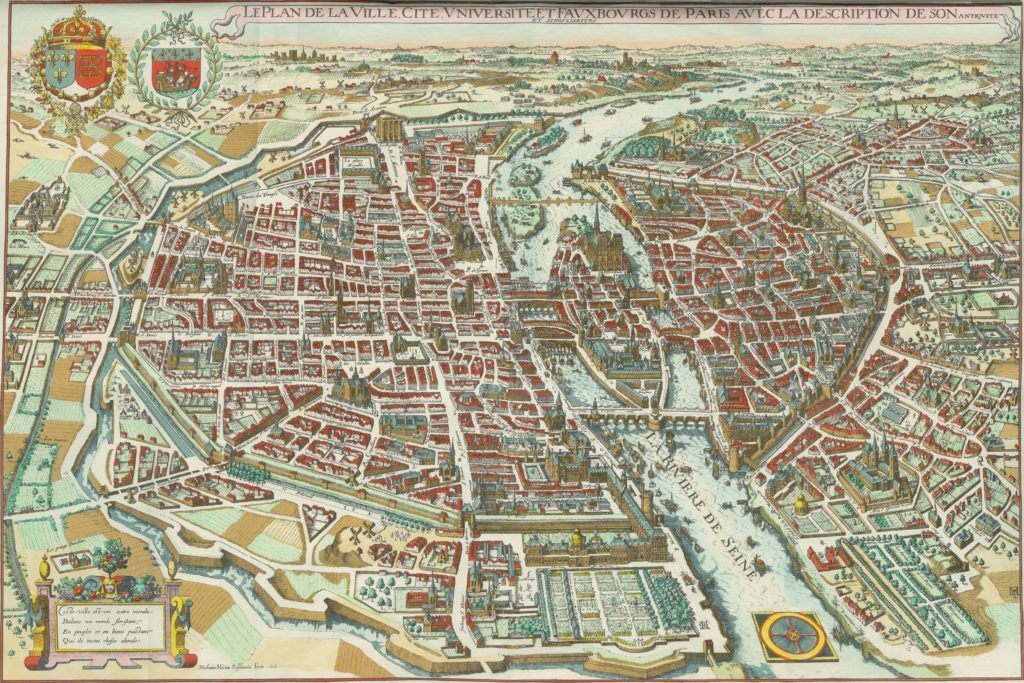Paris 1615 Plan De Mérain
In the early 17th century, specific annual records might be a bit sparse, but here are some notable events that took place in France and, by extension, had an impact on Paris in 1615:
Royal Marriage: In 1615, two royal marriages took place that had significant political implications for France and Paris. On October 9, Louis XIII of France married Anne of Austria, daughter of the King of Spain. Simultaneously, Louis’ sister, Elisabeth of France, married Anne’s brother, the Spanish Infante Ferdinand. These marriages were a part of the Treaty of Fontainebleau (1611), aimed at strengthening the peace between France and Spain.
Political Instability: The year 1615 marked Louis XIII’s formal coming of age and the beginning of his personal rule, which would see the rise of Cardinal Richelieu and the expansion of central royal authority, with Paris as the capital. Marie de’ Medici, Louis’ mother, who served as regent during Louis’ minority, struggled to maintain her influence, contributing to a climate of political instability.
Estates General Meeting: The Estates General (an assembly representing the French estates of the realm: the clergy, the nobility, and the commoners) was called to meet in 1615. This was a significant event, as it showed the nobility’s discontent and their desire to limit royal power. The meeting was held outside Paris, but its results undoubtedly affected the political landscape of the capital.
Cultural Developments: Paris in the 17th century was a hub for cultural development, particularly in literature and philosophy. In 1615, philosopher Pierre Gassendi became a professor of rhetoric at the College of Digne, and while not directly in Paris, his later work would significantly influence French Enlightenment thought, which had Paris as its epicenter.

